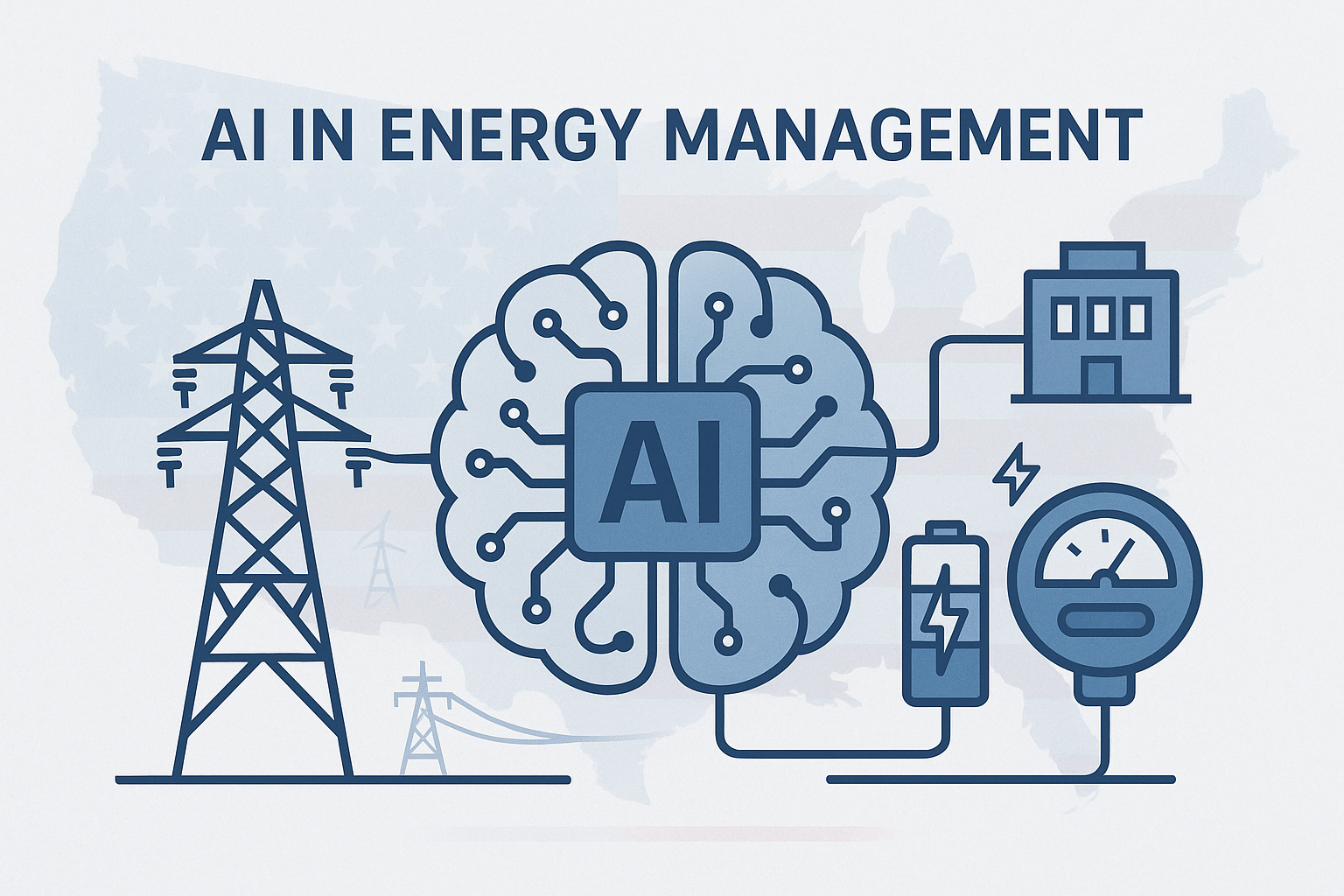
AI in Energy Management: Transforming the U.S. Energy Sector in 2025
Artificial Intelligence (AI) is revolutionizing industries across the globe, and the U.S. energy sector is no exception. As we move into 2025, AI in energy management is playing a pivotal role in optimizing energy consumption, reducing costs, and supporting the transition to sustainable power sources. This comprehensive guide explores how AI is reshaping energy management, the latest trends, top solutions, and what U.S. businesses and consumers need to know.
Understanding AI in Energy Management: The 2025 Landscape
AI in energy management refers to the use of advanced algorithms, machine learning, and data analytics to monitor, control, and optimize the generation, distribution, and consumption of energy. In the United States, the integration of AI is accelerating due to:
- The push for decarbonization and clean energy 🏞️
- Increasing complexity of the energy grid ⚡
- Rising demand for cost-effective and reliable power solutions 💡
How AI is Revolutionizing Energy Management in the U.S.
Smart Grid Optimization
AI enables real-time monitoring and predictive analytics for the U.S. power grid. This helps utilities:
- Balance supply and demand efficiently
- Predict equipment failures before they occur
- Integrate renewable energy sources seamlessly
Demand Response and Load Forecasting
AI-driven systems analyze historical and real-time data to forecast energy demand. This allows:
- Utilities to adjust production proactively
- Consumers to benefit from dynamic pricing models
- Reduction in peak load stress on the grid
Energy Efficiency in Buildings
AI-powered energy management systems (EMS) in commercial and residential buildings:
- Automate HVAC, lighting, and appliance controls
- Identify inefficiencies and suggest corrective actions
- Lower energy bills and carbon footprints
Renewable Energy Integration
With AI, solar and wind power generation becomes more predictable and manageable. AI helps:
- Forecast weather patterns and renewable output
- Optimize storage and distribution of green energy
- Enhance grid stability with variable energy sources
Top 10 AI in Energy Management Solutions for U.S. Businesses (2025)
Choosing the right AI-powered energy management solution is crucial for maximizing benefits. Here are the top 10 platforms leading the U.S. market in 2025:
- Schneider Electric EcoStruxure
- Siemens MindSphere
- Honeywell Forge Energy Optimization
- IBM Watson IoT for Energy
- Johnson Controls OpenBlue
- GridPoint Energy Management
- C3 AI Energy Management
- Enel X Energy Intelligence
- Uplight Energy Suite
- AutoGrid Flex
Side-by-Side Comparison Table
| Rank | Solution Name | Key Features | Best For | AI Capabilities |
|---|---|---|---|---|
| 1 | Schneider Electric EcoStruxure | Real-time analytics, automation, IoT | Enterprises, Utilities | Predictive, Prescriptive |
| 2 | Siemens MindSphere | Cloud-based, scalable, asset management | Industrial, Utilities | Machine Learning, IoT |
| 3 | Honeywell Forge Energy Optimization | Building automation, cost savings | Commercial Buildings | AI Optimization |
| 4 | IBM Watson IoT for Energy | Data analytics, grid management | Utilities, Smart Grids | Deep Learning |
| 5 | Johnson Controls OpenBlue | Smart building integration, analytics | Real Estate, Campuses | AI-driven Automation |
| 6 | GridPoint Energy Management | Energy monitoring, demand response | Retail, Small Business | Predictive Analytics |
| 7 | C3 AI Energy Management | Enterprise-scale, grid analytics | Utilities, Enterprises | AI/ML, Big Data |
| 8 | Enel X Energy Intelligence | Demand response, DER integration | Utilities, C&I | AI Forecasting |
| 9 | Uplight Energy Suite | Customer engagement, energy insights | Utilities, Consumers | Behavioral AI |
| 10 | AutoGrid Flex | Distributed energy resource management | Utilities, Aggregators | AI Optimization |
TIP: When selecting an AI energy management platform, consider scalability, integration with existing systems, and the provider’s track record in the U.S. market.
Key Benefits of AI in Energy Management for U.S. Organizations
Cost Savings and Operational Efficiency
- Automated controls reduce manual intervention and human error.
- Predictive maintenance minimizes downtime and repair costs.
- Optimized energy procurement lowers utility bills.
Enhanced Sustainability and Compliance
- AI helps track and reduce carbon emissions 🌱
- Supports compliance with evolving U.S. energy regulations
Improved Reliability and Resilience
- AI-driven grid management reduces outages and improves response times.
- Enhances resilience against extreme weather and cyber threats.
Challenges and Considerations for AI in Energy Management
While the benefits are substantial, U.S. organizations must address:
- Data privacy and cybersecurity: Protecting sensitive energy data is critical.
- Integration complexity: Legacy systems may require upgrades for AI compatibility.
- Skill gaps: Staff may need training to manage and interpret AI-driven insights.
TIP: Start with pilot projects and partner with experienced AI vendors to minimize risks and accelerate adoption.
The Future of AI in Energy Management: Trends to Watch in 2025
- Decentralized energy systems: AI will enable more peer-to-peer energy trading and microgrids.
- Advanced predictive analytics: Improved forecasting for renewables and demand.
- AI-powered EV charging: Optimizing electric vehicle charging to balance grid loads.
- Greater consumer empowerment: Personalized energy insights and automation for homeowners.
Conclusion: AI in Energy Management is Powering the U.S. Energy Revolution
AI in energy management is no longer a futuristic concept—it’s a present-day reality transforming the U.S. energy landscape in 2025. From smart grids and predictive maintenance to building automation and renewable integration, AI is driving efficiency, sustainability, and resilience across the sector. As businesses and consumers embrace these technologies, they unlock significant cost savings, reduce environmental impact, and ensure reliable access to power.
To maximize the benefits, organizations should carefully evaluate leading AI solutions, prioritize cybersecurity, and invest in workforce training. By staying ahead of emerging trends and leveraging AI’s full potential, the U.S. energy sector is poised for a smarter, greener, and more resilient future.